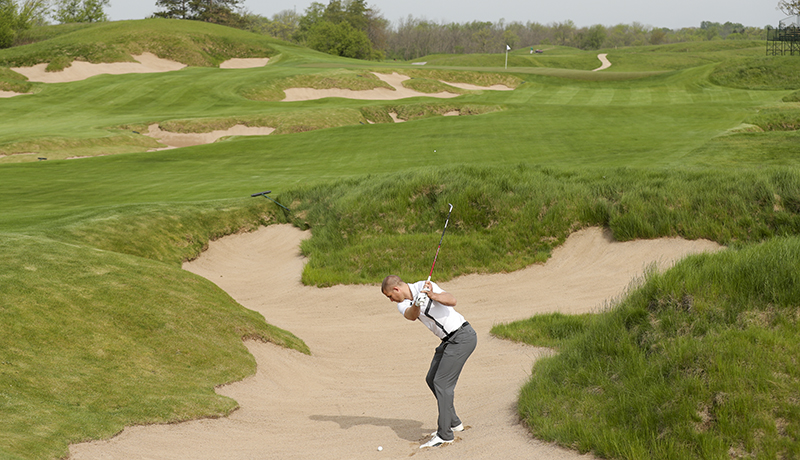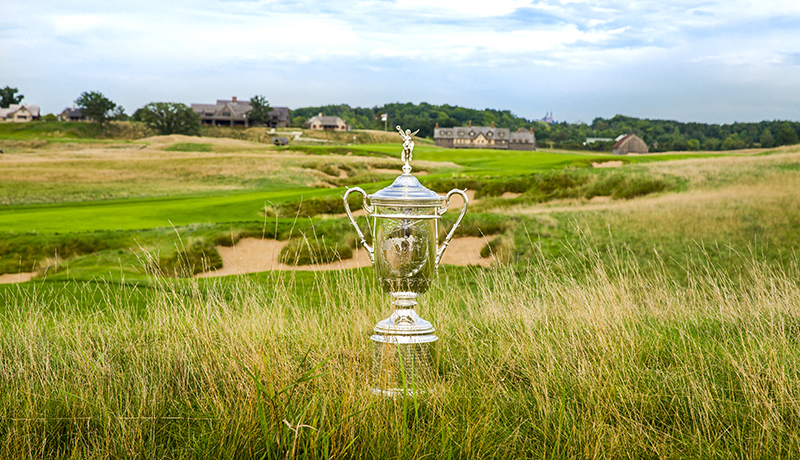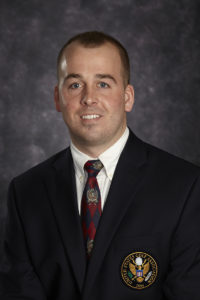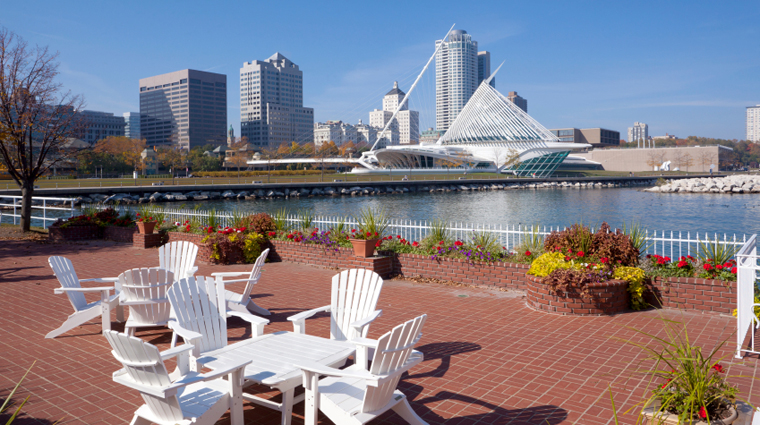

The 18th Hole at Erin Hills, Photo Credit: USGA and John Mummert
Take a look at the list of the past 20 U.S. Open sites. What do you notice — or, more accurately, what don’t you notice? If you said, “a Midwestern golf course,” you’re today’s lucky winner.
Besides a stop at Illinois’ Olympia Fields Country Club back in 2003, one of the world’s finest golf tournaments has avoided the Midwest as if it were a sand trap hugging the 18th green.
Eric Steimer, championship manager for the 2017 U.S. Open at Wisconsin’s Erin Hills, would be well within his rights to be sour about the slight. But he’s not. Steimer would much rather use his energy to make any final preparations before this year’s event (June 15 to 18) formally tees off just outside of Milwaukee.
That way, he’ll ensure that the site-selection committee, PGA Tour members and golf fans share bewildered expressions on their faces as they wonder what took so long for the game to get back to this part of the world.
During a recent conversation with Steimer, of course, we talked about the things that make Erin Hills special, but we also chatted about the off-the-green happenings surrounding the tournament and the must-try sights and bites for those partaking in an event generating more than $120 million for the regional economy.

Eric Steimer, Photo Credit: USGA and Jonathan Kolbe
What makes the U.S. Open such a unique golf tournament?
The U.S. Open is played at a different venue each year. You look at our past couple of years and it has been to places like Oakmont Country Club [in Pennsylvania], Chambers Bay [in Washington], Pinehurst [in North Carolina] and, obviously, in 2017, we’ll be here in Erin Hills. The U.S. Open travels around the country to some of golf’s iconic venues.
If you look ahead to our future host clubs, there’s definitely some clubs that are pretty frequent on our U.S. Open schedule. We have Shinnecock Hills [in New Jersey] coming up in 2018 and 2026. We were just at Oakmont a year ago; that’s the ninth time it has hosted the U.S. Open. Consequently, in 2025, it’ll be hosting its 10th U.S. Open.
The second part is that the U.S. Open is truly open to all. There are some exemptions that will lend a player into the field, whether it’s a past U.S. Open champion over the past 10 years; winning one of golf’s other three majors; and some other exemptions that we have.
But when you start looking at our field of 156 players, we’re forecasting we’ll have over 10,000 golfers with a handicap index of 1.4 or below attempt to qualify for the U.S. Open. When you take a number like 10,000 and attempt to whittle it down to 156 — or even less than that when you factor in the exemptions — you get some great local stories.
I’ve heard that you’re installing 10 miles of fencing and 500 TVs around the course. What are the biggest challenges with putting this massive event together?
Internally, we kind of look at it from two different ways: the contents of the championship as it relates to inside the ropes and the content as it relates to outside the ropes.
When you talk about inside the ropes, you’re talking about the 18 championship holes we have here. This is a very new property. It was constructed in 2004 and opened in June of 2006. When you take that into consideration, this golf course is going to be roughly 11 years old when it hosts its first U.S. Open, it’s first major. That’s remarkable. There’s not many places that can say that. Really, that starts with those 18 championship-caliber holes.

Green Bay Packers Star Jordy Nelson Tries Out The Course, Photo Credit: USGA and John Gress
We do have some history that goes back to 2008, when we hosted the Women’s Amateur Public Links and then, in 2011, we hosted the U.S. Amateur [men’s championship]. A lot of the names that you’re familiar with today competed in that U.S. Amateur at Erin Hills. Names like Jordan Spieth, Justin Thomas, Rickie Fowler, Patrick Cantlay and even our eventual champion Kelly Kraft, who just finished runner-up at the AT&T Pro-Am at Pebble Beach a few weeks ago.
Back in 2011, we saw how the golf course held its own against some of the world’s top amateurs. If we fast-forward six years to June of 2017, not a whole lot of changes have gone on inside the ropes. We’ve reshaped a couple of bunker complexes and carved off a few approach areas and runoff areas around the green. But all things considered, there has not been a whole lot of work done at Erin Hills since we hosted the 2011 Amateur.
One of the neat facts about Erin Hills, and just a story we like to tell, is how it was architecturally formed. Over 10,000 years ago, glaciers collided to really form the Kettle Moraine region where Erin Hills sits on in Wisconsin. Long story short, Mother Nature was truly one of the original architects of this golf course.
When the three current architects — Ron Whitten, Dana Fry and Mike Hurdzan — came in, they were able to simply take a minimalist approach in terms of how they wanted to architecturally design the golf course.
What activities do you have planned for the week outside of the tournament?
June 8 through the 11, we have our Pre-Championship Merchandise Opening, which is open to the general public. You don’t need a ticket. Anyone in the immediate proximity of Erin Hills, or anyone who wants to travel in, can walk through our 39,000-square-foot merchandise pavilion.
Starting June 12, the start of Championship Week, the pavilion is only open to ticket holders or credential holders.
Additionally, on June 14, our country’s Flag Day, we’re working with the Wisconsin Army National Guard to really create a unique experience with an event that celebrates all of our active and retired military members.
For the golf fan who plans on splitting his time between Erin Hills and Milwaukee, what are a few must-try restaurants in the city?
If somebody is looking to get out of downtown, I definitely recommend Wauwatosa. They have great restaurants like Cafe Hollander and Cafe Bavaria. It’s just a good place to sit down and have a burger and a beer. They do it right over there.
As you look closer to downtown, there are a lot of great places to eat. If somebody has the chance to experience downtown, they’ll see that Wisconsin is a lot more than just beers and brats. Granted, we do enjoy them, but if you’re looking for a great steak dinner, I recommend Carnevor, which is owned and operated by Surg Restaurant Group.
Spend some time in what’s called Historic Third Ward. It’s an older area, the former downtown back in the older settlement days. The Third Ward is definitely an up-and-coming area.
I think that’s something that someone visiting Wisconsin for the first time will be surprised to see — there are a lot of one-off restaurants, hole-in-the-wall taverns and pubs; not quite as many chains as you’d expect. In the Third Ward, you can go to a place like Cafe Benelux, The Wicked Hop or some of the restaurants located next to the public market.
Even if you just wanted to have a nice, romantic meal, you can check out Harbor House, which is located right on Lake Michigan. It gives some great views, not just of the city but of the lake.

